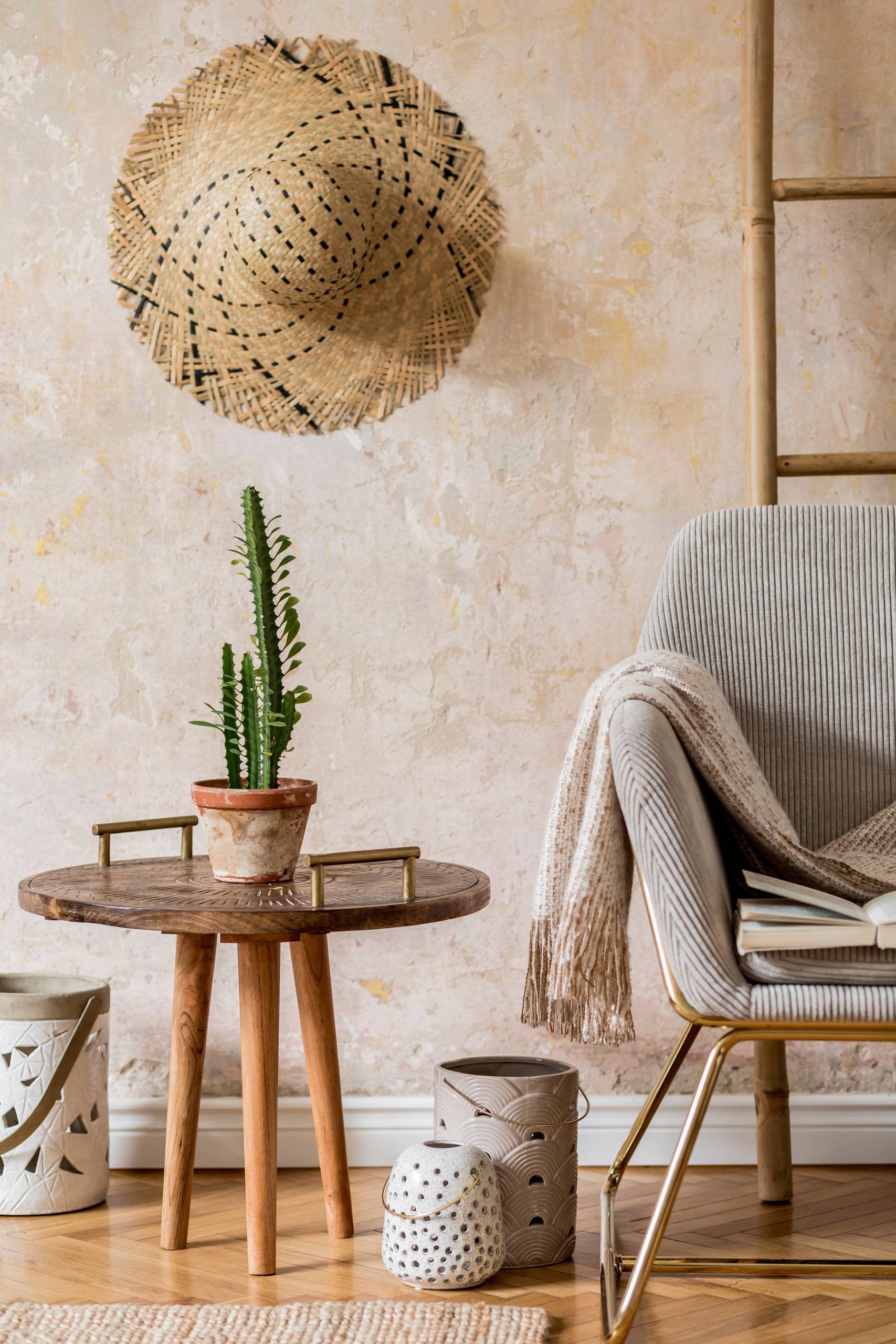
In an era where environmental consciousness is at the forefront of every purchase and design decision, interior design has taken a significant turn towards natural materials. As a “Home & Garden” blogger passionate about “Interior Design and Decor,” I am thrilled to share how decorating with natural materials can help achieve a serene, organic look in your living spaces. Let’s delve into how incorporating these materials can transform a home into a harmonious, sustainable sanctuary.
Embracing Nature’s Palette
The primary allure of decorating with natural materials is their inherent colors and textures. They usher the outdoors in and serve as a grounding complement to a home’s existing decor. Wood, stone, bamboo, clay, and fibers like cotton and wool bring a palette inherently tied to the earth—warm browns, soft beiges, lush greens, and calming tans. This natural color spectrum creates a tranquil atmosphere that speaks to our instinctive connection with the outdoors.
Wood: Nostalgic and Evergreen
Wood is arguably the most beloved natural material in interior design. Its versatility and timeless aesthetic make it a staple for everything from flooring to furniture. Reclaimed wood is particularly popular, not only for its sustainability but for the character and history it offers. Each piece tells a story—an appeal that newly manufactured materials simply cannot replicate.
Consider implementing wood in flooring, or even as accent walls to add warmth and depth to your space. Wooden beams on ceilings can evoke a rustic charm, while sleek wooden furniture lends a modern touch. When selecting wood, opt for finishes that showcase the grain and natural imperfections, enhancing its authenticity.
Stone: Majestic and Timeless
Stone is another natural material that can dramatically elevate an interior’s aesthetic. Whether used on countertops, backsplashes, or floors, stone’s enduring qualities provide both durability and a sophisticated look. Materials such as marble, granite, slate, and limestone each offer unique textures and veining that can create visual interest while maintaining an organic feel.
For an added layer of texture, consider incorporating pebble tiles in bathrooms or kitchen areas. The tactile sensation underfoot not only adds an unexpected element but connects seamlessly with nature-inspired decor.
Bamboo: Sustainable and Versatile
Bamboo is heralded for its sustainability. As one of the fastest-growing plants, it’s a renewable resource that doesn’t compromise on style or strength. From flooring to furniture, bamboo brings a clean, contemporary appeal with its sleek, linear look. It’s incredibly versatile—used in a variety of forms from curtains to cutting boards, offering innovative solutions for eco-friendly living.
Furthermore, bamboo’s natural lightness can be utilized in window treatments or as a material for furniture, providing a chic, airy feel to any room.
Clay and Ceramics: Earthy and Artisanal
Using clay and ceramics in home decor allows for a warm, handcrafted look that pays homage to artisan craftsmanship. These materials can be found in tiles, pottery, and even lighting. Opt for locally made pieces where possible to support artisans and add uniqueness to your home.
Ceramic vases or clay pots can serve as focal points on tables or shelves, while terracotta tiles offer a rustic charm ideal for kitchens and fireplaces. The tactile quality of these materials invites a tactile connection, enhancing the sensory experience of the home.
Fibers: Comfort in Textiles
Natural fibers such as wool, cotton, jute, and linen are essential for creating a comfortable, organic aesthetic. Textiles crafted from these materials bring softness and a sense of coziness to interiors. Consider woolen rugs, cotton throws, linen drapes, or jute baskets to add layers of warmth and texture.
In addition to their aesthetic benefits, natural fiber fabrics are often more breathable and hypoallergenic, contributing to a healthier living environment.
Incorporating Plants: The Living Element
No organic decor is complete without the incorporation of living plants. Bringing greenery indoors not only enhances the aesthetic but improves air quality and promotes well-being. Whether in the form of a towering fiddle leaf fig or small succulents peppered throughout a room, plants enliven a space and extend the natural decor theme.
Plant stands crafted from natural materials or woven baskets as plant holders complement this look, making nature the star of your home decor.
The Psychological Connection
Decorating with natural materials nourishes the human psyche. As humans, there’s an intrinsic bond to nature—the biophilia hypothesis suggests that people have an innate tendency to seek connections with nature and other forms of life. By incorporating natural materials into your home, you’re fostering a connection that can reduce stress, boost moods, and enhance creativity.
Sustainability and Conscious Living
Finally, it’s worth noting that choosing natural materials aligns with a sustainable and conscious lifestyle. Selecting materials that are renewable, biodegradable, and crafted via environmentally friendly methods reduces the carbon footprint and supports green practices.
Indulging in natural materials does not mean compromising on style or comfort—rather, it offers the opportunity to create an environment that is both aesthetically pleasing and socially responsible.
In conclusion, decorating with natural materials is not merely a trend but a meaningful approach to interior design that promotes well-being, sustainability, and timeless beauty. By choosing materials that speak to the earth, you imbue your living space with warmth, authenticity, and an organic essence that resonates with the soul. As you transform your home into an organic haven, you’re not just designing a space—you’re creating a lifestyle.







